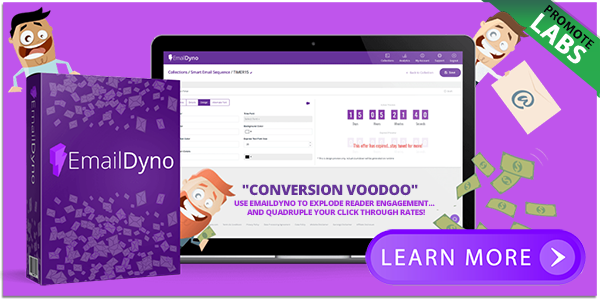According to a recent study, which examined a huge swath of literature on Small and…

How to Find Your Startup’s Niche
When you’re a young startup with promising technology, capturing the interest of a lot of different industries is a great boost. However, it brings a new set of problems. There’s no surer way to dilute your brand and burn through your capital than to spread yourself too thin across multiple sectors. It pushes your customer acquisition costs through the roof and almost guarantees that you’ll be a second-tier alternative in several industries but a market-leader in none.
You can’t be all things to all people. But choosing which sector to focus on can be a real challenge — particularly if you’re working with a technology, like AI, that has countless potential applications. As a tech entrepreneur with a background in online retail, I naturally gravitated toward ecommerce firms when seeking clients for my company’s customer platform. I could see it would be a good fit, and it was. However, it was also a surprising hit among sales teams in pharmaceuticals — an industry I knew far less about but which is on track to be a $16-billion market for tech like ours.
So, how do you choose a market to go after? And when? Here’s what I learned from my heart vs. head struggle to pick a lane:
Avoid pilot project purgatory
One of the hardest things to know is at what point you should start focusing in on a particular market. There’s a natural tendency to avoid closing doors, but that creates a risk of getting stuck in endless market research>, due diligence and test projects. Their returns diminish quickly.
In 2018, my partner and I incorporated our company around a technology that applies AI to data-driven analytics to understand and influence the customer journey. We took countless meetings and talked to people in at least 10 different industries — including supply chain, lighting factories, IoT devices, pharmaceuticals, ecommerce, advertising and cybersecurity. We had multiple offers to work on paid pilot projects, and we took on several, which helped us refine our product. But after around two years of projects and meetings, it became apparent that we were gaining less and less from each one. When COVID hit and threw everything into flux, we’d already decided the time had come to focus, but it forced us to quickly choose between ecommerce and pharma, our two highest-potential markets. When an opportunity presents itself, you can’t hesitate.
If a sector is hyped, it’s saturated
One of the biggest mistakes is going for what’s sexy now, because at that point, you’re already too late to enter the market. Hype is not a useful metric, and you can’t stick with something just because it’s cool. If you’re not seeing good usage stats for your product within three to four months, then you’ve got to stop and move on.
In our case, there were lots of voices, including investors, nudging us toward ecommerce. It’s certainly a buzzier sector than pharma, but the market is so saturated, so we had to consider how we could compete. We wouldn’t be that special. We’d be going up against behemoths like Google Analytics, and that’s tough.
For any machine-learning company, data is everything. As soon as we had a contract with a pharma organization, we had access to their data, so we could really work on building a specialized product with it. That was a big indicator that we were going in the right direction.
Listen to the market’s signals
The biggest thing to consider is whether you are pushing your idea too hard on a market or whether it is genuinely pulling your technology toward it because there is a need.
I once had a meeting with a very smart investor who told me everybody tries to sell their technology on the basis that it will cut their client’s costs. But enterprise customers get more excited about products that will make them money. The ROI is clearer.
During the pandemic, the ROI on our product came into sharp focus in the pharma industry as its sales reps couldn’t get in front of their customers. We started getting lots of people popping up on LinkedIn asking if they could try out the tech. That’s when we realized we were on to something with pharma. That type of traction gets us excited. And if you don’t get excited about your user, then there’s something wrong.
You need to have a few indications that you’ve got a viable product: It has to make business sense, it has to make tech sense and it has to make design sense, meaning it’s user-friendly. And, especially when we’re talking about AI, it has to make ethical sense. For pharma, we ticked all the boxes.
The next question for us was, how fast can we do this? Can we get it in front of enough users quickly? We could do that in ecommerce. Pharma was slower, but there was a bigger long-term opportunity as we would be one of the first players in the market. We opted to go with the harder and riskier option but for a bigger win in the end. If it’s a bit more niche, you’re likelier to have a larger impact.
If it comes to head vs. heart, head wins.
Frankly, I was more attracted to ecommerce. I have worked with multiple merchants over the years, the content is fun and data is accessible. I felt pulled emotionally in one direction, but the business and technology opportunity was pulling me in the other. Also, it was a bit sexier than pharma. Again, I felt pulled emotionally in one direction, but the business was pulling me in the other. We were hitting our milestones continuously in pharma. And the reality is, entrepreneurs must be responsible to their investors and employees. So, for the past two years, I’ve swapped art for science and have been talking to people in pharma every week to learn about their industry, their challenges or even just what their workday looks like.
If you can go big in one industry that needs you, go for it. It might not be the sexiest one, but it’s the one that will make a good business.





